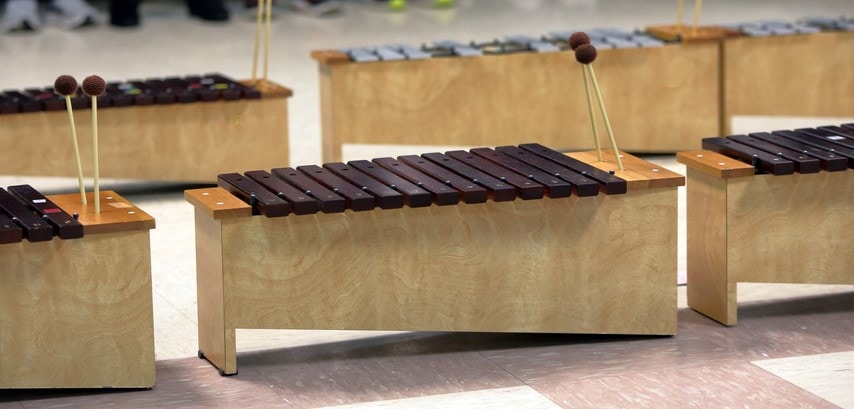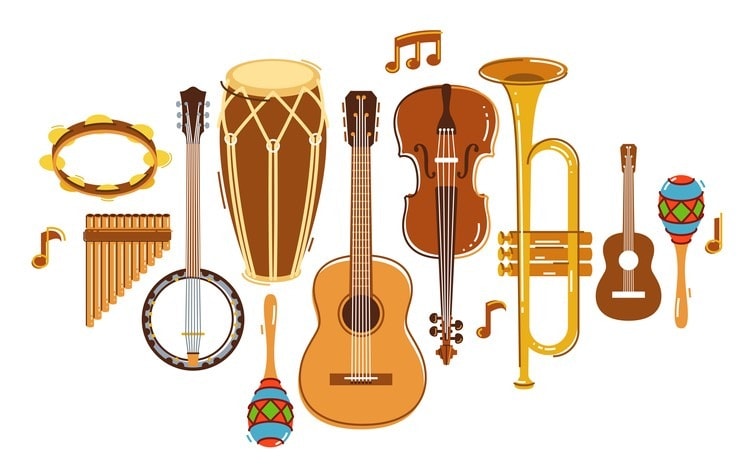/ News Posts / Linking Latin Rhythms into Orff Ensembles
Linking Latin Rhythms into Orff Ensembles
By NAfME Member Oscar Oviedo
Presenting Linking Latin Rhythms into Orff Ensembles at the “NAfME is ME!” 2022 NAfME National Conference in National Harbor, Maryland. Register now.
This interactive session will focus on incorporating a Latin beat into an Orff ensemble. I will demonstrate how I used an original melody and composed an Orff arrangement inspired by the Atlantic Coast folk music of my native country, Colombia. Attendees will be guided through the strategies to teach a Latin upbeat accurately and effectively, through increasing students’ understanding of creating, listening, playing skills, and cultural sensitivity. This session will also emphasize how to cultivate student understanding of rhythm, ostinato, pentatonic melodies, and form through an engaging and energetic teaching process.
From the beginning to the end of this session, attendees will have the opportunity to practice each step of the process just as it should be taught in their classroom. I have arranged the session so everyone has a role to play in the ensemble through singing, playing, and moving, while enjoying and feeling Latin beats as they perform with the full ensemble.
Using this arrangement, teachers will be able to teach a variety of music concepts in this lesson. Rhythm can be a focal point in this lesson through the use of iconic and standard notation. The rhythms include quarter notes, dotted quarter notes, quarter rests, eighth notes, eighth rests, half notes, half and whole rests. Meter of 4 can also be taught with this lesson. Focusing on the division of beats and how the beat patterns are arranged in the composition. Melody may also be emphasized through teaching the pentatonic scale. Harmony may be another focal point using the perfect 5th and octaves for the purpose of playing borduns. AB Form with variations is another element that may be emphasized through this lesson.
My approach to incorporating learning a folk song from my native country into the Orff process addresses several of the 2014 Music Standards. The A and B sections of the song are structured in a manner that the performer will know what to do in the contrasting sections of the song. Each step in the sequence of the presentation prepares the performer for the next section of the song and reinforces the demonstration of understanding how rhythm and melody interact during a musical experience. I have also provided the combination of iconic and standard notation for attendees to use when they return to their classrooms. Since this Colombian folk song can be sung alone or with others, it is important for the performers to understand that the appropriate way to interpret this music is to become sensitive to the expressive nuances that occur which will aid in their technical accuracy while performing this song. Therefore, I have identified the following 2014 Music Standards that are used in my presentation of linking Latin rhythms into Orff ensembles:
- MU:Pr4.2.3a Demonstrate understanding of the structure in music selected for performance
- MU:Pr4.2.4a Demonstrate understanding of the structure and the elements of music (such as rhythm, pitch, and form) in music selected for performance.
- MU:Pr4.2.3b When analyzing selected music, read and perform rhythmic patterns and melodic phrases using iconic and standard notation.
- MU:Pr5.1.4b Rehearse to refine technical accuracy and expressive qualities, and address performance challenges.
- MU:Pr6.1.4a Perform music, alone or with others, with expression and technical accuracy, and appropriate interpretation.
This lesson related to NAfME DEIA study as follows:
Diversity
In this session, I am presenting an original melody inspired by the Atlantic Coast folk music from my native country, Colombia. This is the music that I experienced and internalized before I began playing and performing it. I am sharing a part of the culture from my country and presenting it through an Orff ensemble arrangement that I composed.
Equity
This lesson will provide students with the opportunity to collaborate their musical skills while performing with others. Each student will have an important role to play in the ensemble addressing varied abilities. The goal is for each student to feel they were given the opportunity to contribute to the ensemble while learning the music concepts taught in the process.
Inclusivity
I intentionally composed this ensemble to grant each student the opportunity to contribute to the process regardless of any physical or cognitive challenges that they may possess. Having the option to collaborate with others musically, students will not feel left out or unsuccessful because they will successfully perform with their peers.
Access
This Orff ensemble provides access for both teacher and student. First, the structure of this arrangement has two sections with different parts that give the teacher the opportunity to allow everyone to play a role in the ensemble. Second, the access to the variety of instruments and parts to play in the B section will also provide students the choice of which part they would like to play in the arrangement. Last, the teacher will provide the experience of exploring music from a different culture.

About the author:
 NAfME member Oscar Oviedo is a music teacher who was born in Colombia. He graduated from Universidad Industrial de Santander with a bachelor’s degree in Music Education in 2002. After graduation he was director and arranger of vocal and instrumental groups in Bogota-Colombia where also taught at elementary and high school in public and private schools for about seven years. In 2011 he arrived in North Carolina, and in 2013 he started to work as a music director at Kinder Spanish where he composed and produced Latin music to support the acquisition of the Spanish language. He was also the owner of Crescendo Music Academy where he taught piano, guitar, and voice lessons. In 2019 he received his Orff-Schulwerk certification from Appalachian State University. Currently, he works as a music teacher at David D. Jones Elementary School in Guilford County, where he integrates Orff best practices and likes to innovate using Latin music rhythms into his lessons.
NAfME member Oscar Oviedo is a music teacher who was born in Colombia. He graduated from Universidad Industrial de Santander with a bachelor’s degree in Music Education in 2002. After graduation he was director and arranger of vocal and instrumental groups in Bogota-Colombia where also taught at elementary and high school in public and private schools for about seven years. In 2011 he arrived in North Carolina, and in 2013 he started to work as a music director at Kinder Spanish where he composed and produced Latin music to support the acquisition of the Spanish language. He was also the owner of Crescendo Music Academy where he taught piano, guitar, and voice lessons. In 2019 he received his Orff-Schulwerk certification from Appalachian State University. Currently, he works as a music teacher at David D. Jones Elementary School in Guilford County, where he integrates Orff best practices and likes to innovate using Latin music rhythms into his lessons.
Did this blog spur new ideas for your music program? Share them on Amplify! Interested in reprinting this article? Please review the reprint guidelines.
The National Association for Music Education (NAfME) provides a number of forums for the sharing of information and opinion, including blogs and postings on our website, articles and columns in our magazines and journals, and postings to our Amplify member portal. Unless specifically noted, the views expressed in these media do not necessarily represent the policy or views of the Association, its officers, or its employees.
October 26, 2022. © National Association for Music Education (NAfME.org)
Published Date
October 26, 2022
Category
- Diversity, Equity, Inclusion, and Access (DEIA)
- Representation
Copyright
October 26, 2022. © National Association for Music Education (NAfME.org)





